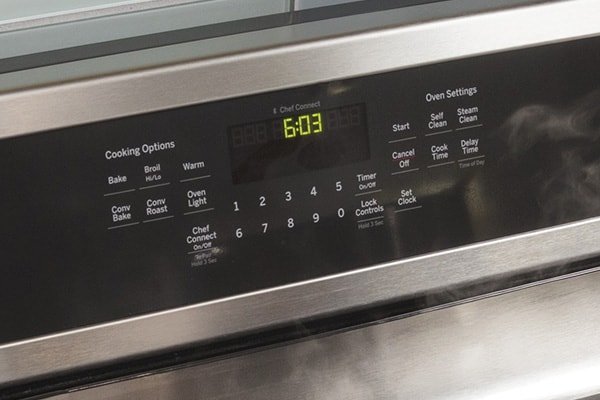
So, what does an error code LE mean? Imagine your oven as a complex orchestra, and each component plays a crucial role in delivering that perfect melody—or in this case, perfectly baked cookies. The LE error is like a screeching violin string. It typically signals a problem with the oven’s control board, often related to a loss of communication within the system. This can feel overwhelming, especially for those of us who aren’t exactly tech wizards. But, resetting your oven is often like hitting a reset button on your computer. It’s a simple step that can solve the issue without any tools or technical know-how.
Understanding Error Code LE
The first thing you might be wondering is, “Why does this happen?” Your GE oven, much like any other electronic device, relies on various components working together seamlessly. The LE error points to a communication hiccup, possibly between the electronic control and the internal sensors. Think of it like having a dropped call on your phone—frustrating, but generally easy to fix. This error can be triggered by several factors, including power surges, which may cause temporary disruptions.
Another reason you might see an LE error is due to wiring issues or moisture. Imagine wires as veins transporting information throughout your oven. If they are disrupted by a kink or moisture—say, from a recent steam cleaning or spill—they might not work correctly, causing a miscommunication. Even environmental factors like humidity levels in your kitchen can play a part.
Moreover, your oven’s control board could be compared to the brain, processing all the information and delegating tasks. If the brain doesn’t get the right signals from the senses, in this case, the temperature sensors, it can’t function correctly, and you get an error code. Fortunately, a reset is usually all it takes to iron out these disruptions and get things back on track.
Steps To Reset Your GE Oven or Range
Now, let’s get our hands dirty (figuratively, of course) and reset that frustrating error code. Here’s what you’ll do: First, ensure your oven is completely off by turning all knobs to the ‘off’ position. Then, carefully unplug your appliance from its power source. This is the equivalent of turning your computer off and on again—simple, but often effective. If your oven is hard-wired, switch off the circuit breaker dedicated to it. Leave it sit in silence for about 60 seconds.
After a minute has passed, plug your oven back in or flip the circuit breaker back on. This brief power cut allows your oven’s electronic components to reset and recalibrate. It’s like giving your oven a chance to have a little rest and then wake up refreshed and ready to work again. Turn it back on and check if the error code LE has disappeared. Often, this is enough to fix the issue.
If the LE error persists, it might be time to consult your appliance’s manual or reach out to GE’s customer support for further assistance. This ensures that any underlying issues that might require professional attention are addressed, preventing a small problem from becoming a bigger headache.
Additional Tips and Prevention
Now that you’ve learned how to reset your GE oven or range after encountering the LE error code, let’s talk about prevention. First, consider installing a surge protector for your kitchen appliances. Much like an umbrella keeps you dry from unexpected rain, a surge protector can guard your oven against power surges.
Regular maintenance can also prevent future hiccups. Think of it as a routine check-up at the doctor’s office. Regularly clean your oven, keeping an eye out for any signs of moisture or spilled food that could affect internal wiring. It’s also a good idea to keep your kitchen’s humidity levels in check—especially during particularly humid seasons—either by using a dehumidifier or ensuring proper ventilation.
Lastly, remember that while appliances are incredibly helpful, they sometimes need a little TLC. Giving your oven the occasional once-over will help it run smoothly and keep those error codes at bay. And remember, when in doubt, your appliance manual is like a trusty old guidebook ready to help you troubleshoot any issues.
By following these steps and tips, you should be able to tackle that pesky LE error code and keep your GE oven running smoothly. Remember, a little patience and care can go a long way in ensuring your kitchen remains a place of joy and delicious creations. Happy cooking!